Brand Strategy: 6 Tips for Building Your Profit Growth Plan
Up until the 1980’s, Sears dominated the retail niche with its brand strategy. And then Sears was annihilated by Amazon; reduced to a home and appliance goods market, its former splendour in ruins.[1]
Today, in just about every industry, competition is fierce with new challengers and disruptors changing the status quo in every sector.
To ensure survival, leaders of businesses must see tomorrow and infuse (and re-infuse) their brands with an evolving vision which is developed through brand strategy.
Today, this is even more critical when you consider the average life expectancy of a Fortune 500 company has declined from around 75 years half a century ago to less than 15 years today…and it’s declining all the time.
So the question is, can you clearly articulate;
• what your brand stands for
• what makes you different to your competitors and
• how you dominate (or plan to dominate) your sector
Your brand strategy is the foundation to your business success. It goes hand-in-hand with, and informs your overall business strategy so it pays to give it the attention it deserves because you can’t fully achieve your growth plan without a strong brand strategy.
Related: How Do Challenger Brands Become Market Leaders?
Here we share with you 6 tips for building a strong brand strategy to set you apart, and in front of your competitors, both now and into the future.
And unlike Sears, to keep you there.
6 Tips for Building a Strong Brand Strategy
1. Make Brand Strategy The Foundation on Which Your Business is Built
Brand strategy should be the core driver of every business strategy, because it’s a long-term plan for business success and impacts every area of the business, from employee recruitment, marketing and sales, to competitor differentiation, consumer needs and nurturing customer emotional engagement.
Remember: People buy with emotion first and justify with rational afterwards so you must win the heart first so you can move the mind to purchase.
It is the brand strategy that sets you apart from your competitors and determines the culture and value of your company.
Let’s take a look at Chubbies Shorts. On their website, they list their beliefs which drives everything they do and really showcases their brand personality and what they stand for:
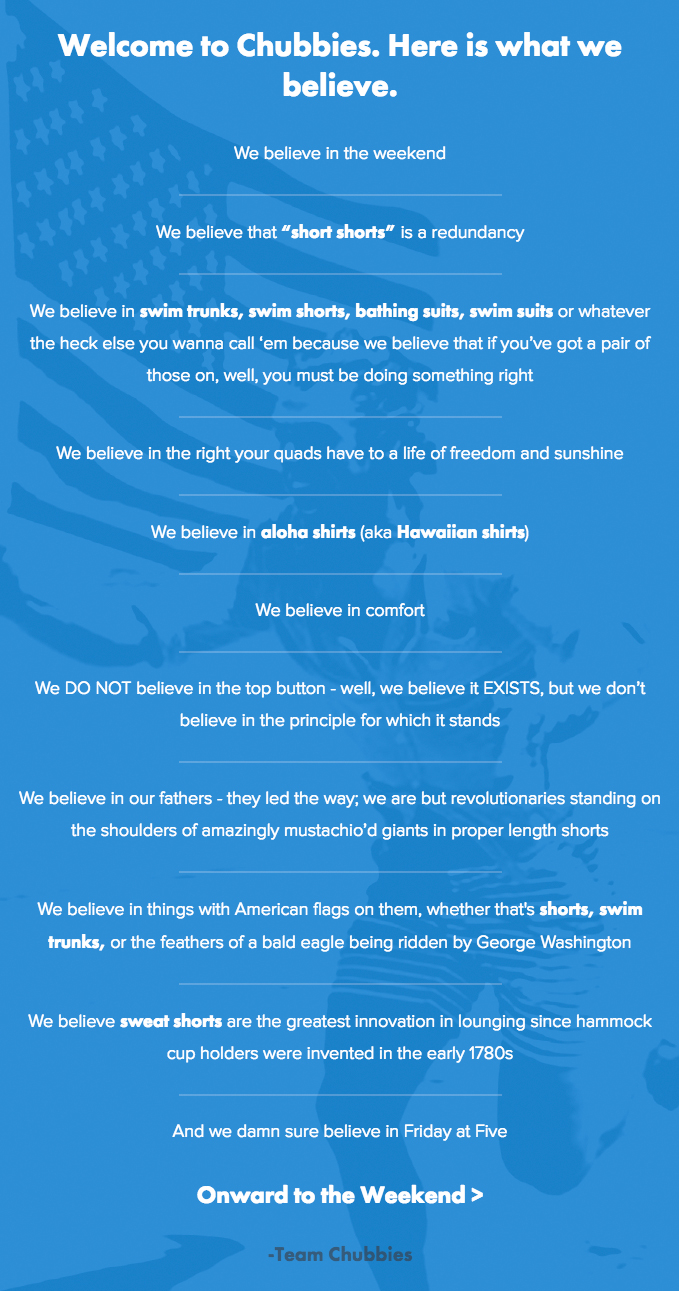
Image via Chubbies
Related: Personality Matters, Bring Your Brand to Life to Grow Your Profits
Essentially, the Chubbies Shorts[2] brand is a lifestyle, and all their marketing reflects that. For instance, their Facebook page is listed not as a business page, but as an entertainment page, and they fulfill that promise. Their page consists of user generated video clips about how their customers wear Chubbies Shorts, and funny videos Chubbies create for their followers.
Related: Use Humour in Branding to Create Strong Emotional Bonds so You Increase Sales
Wildly popular, it’s no surprise they are currently sitting on a whopping 1,568,919 likes, with each post boasting anything from 1 – 23K views.

Image via Chubbies
Humorous entertainment drives the brand’s connection with its audience; have a look at the video clip about the unconventional Chubbies Shorts company.
The lesson? Chubbies Shorts would never be the trendy, fun brand they are if the founders did not use their brand strategy to underpin the business growth to success.
Your business can also become a beloved brand, no matter how lacklustre it might appear to be at present! Give it a growth boost now by using our online brand building programme, the Personality Profile Performer™ course. This will empower you to build your brand so you so achieve your profit growth plan.
2. Identify and Instill Your Unique Value Proposition
Your unique value proposition is what separates your business from your competitors.
Unbounce defines it as, “a clear statement that describes the benefit of your offer, how you solve your customer’s needs and what distinguishes you from the competition.” And it does so in one concise sentence.
Typically, it’s the UVP that tells a visitor within seconds of arriving at one of your brand touchpoints, like your website, how your business can help him or her.
Nike’s mission statement[3], or UVP, is “to bring inspiration and innovation to every athlete in the world.” Coca-Cola has seasonal campaigns, the latest being, “taste the feeling”[4]. Walmart’s is, “Save money. Live better.”[5]
An exceptional example of a UVP-driven company is Bombas[6], an e-commerce store that sells socks. For every pair of socks that’s sold, one pair is donated to a homeless shelter.
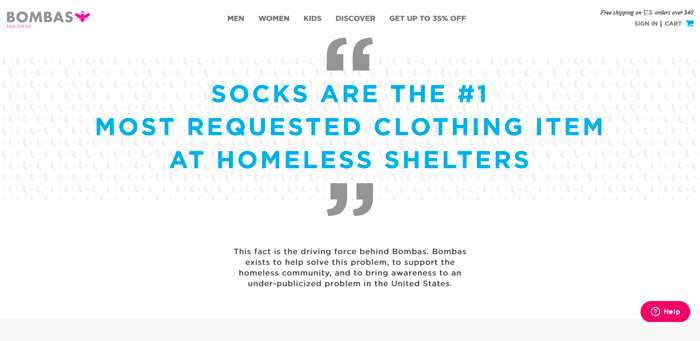
Image via Bombas
Added to that is the fact their socks are designed uniquely; they claim they are the most comfortable socks you’ll ever wear, and that they are made with technology that makes them a better sock for the lifestyle of the homeless.
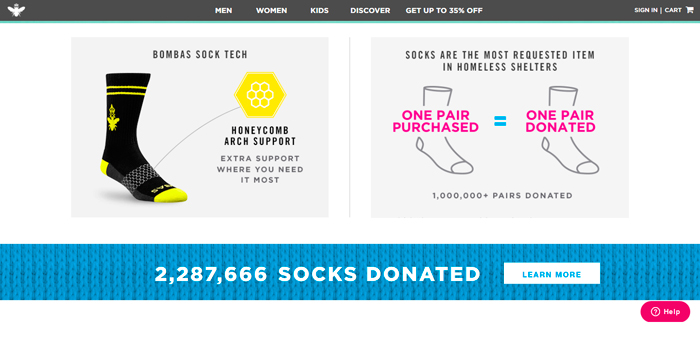
Image via Bombas
Bombas was started to help homeless people. Their UVP is reflected in all the company does and their corporate social responsibility brand sits at the heart of their brand strategy.
What makes your company unique? How can you communicate the benefits of your brand within 8 seconds (using emotionally compelling language to drive home your message in a way your ideal customer finds really irresistible)?
Related: Brand CSR, The Business Case for Successful Branding and Social Good
3. Understand Your Ideal Customers
Marketing endeavours will only ever be successful when they align with the interests and needs of your primary target customers.
It’s a mistake to market to everyone; it only wastes time and money because you can never solve everyone’s problems or provide a solution for everyone. Understanding your target customer, what they care about and building your brand strategy around them, is essential for your growth plan.
Take Pura Vida[7] who sell handmade bracelets made in Costa Rica. They have a rich understanding of their ideal ‘Purchaser Persona’ and have mastered the art of brand storytelling, establishing themselves as a beloved brand.[8] In fact it’s essential you learn how to inject your brand with purpose, meaning, stories and feelings so you can increase your sales.
In the example below, instead of an annoying website pop-up, they provide value to their visitors with a pretty pink spinning wheel – technically also a pop-up, but one which
- is attractive to women and
- provides value to the kind of person, their ‘Purchaser Persona’ that typically buys from them.
Their visitors are fully engaged and can hardly resist clicking on the “spin to win” wheel. When clicked, it spins and lands on one of the four options:
- A free bracelet
- 10% off purchases
- 5% off purchases
- Free shipping
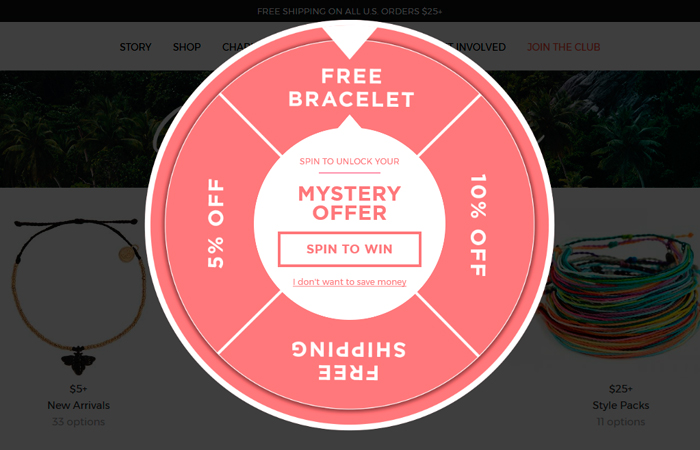
Image via Pura Vida
The result?
24% submission rate and a 34.76% conversion rate lift.[9]
Every business has a minimum of between two to twenty different ‘Purchase Personas’ so it’s essential you identify and map out each of your different customer types because you need to understand your target audience, their needs, wants, loves, hates and aspirations intimately, in order to maximize your brand strategy growth results.
In fact, this exercise is one of the key elements in our ten-part brand building programme called the Personality Profile Performer™. As you map out each of your different customer types using the ‘Purchaser Personas’ system, the outputs provide the critical insights and direction for how your brand can speak to your customers on their terms so they find your message compelling — winning their hearts and minds on their terms — so you can grow your business. You can watch a free course preview here.

Build Your Profitable Brand Using The Personality Profile Performer™ Programme with Lorraine Carter
Alternatively if you want in-person professional direction to build your brand and would like to explore working with us then drop us a line to [email protected] or give us a call T: +353 1 8322724 (GMT). We’d be delighted to talk with you.
4. Define Your Story
Brand storytelling can be defined as the conscious and unconscious, verbal and nonverbal messages a brand tells its customers and prospects.
Now, every company that advertises or has a marketing strategy, is telling a story. Think of it this way: when you first make a new friend on Facebook, you might check out the person’s “about” tab, photos and news feed. By doing that, you’re building a picture of what’s important to your new buddy. Everything that person posts, tells a story about who they are and what they value.
Related: Brand Stories – 5 Compelling Examples That Sell Themselves (part 1 of 2)
In the same way, everything your business “puts out there”, is telling a story. The question is, has your ‘brand’ story been an accidental manifestation or is it a highly strategic narrative, authentic in quality and very customer focussed — memorable, emotionally compelling and referable.
Related: Brand Stories – 5 Compelling Examples That Sell Themselves (part 2 of 2)
Chase Bank went to great lengths not to leave their brand storytelling to chance. Stacey Warwick, Head of Brand Innovation at JPMorgan Chase, says that the company believes, “content humanizes financial brands and builds relatability”. They aim to provide helpful content that empowers their clients.
Their website is proof that they’re not just another bank; it includes value-added content, as per their brand strategy:
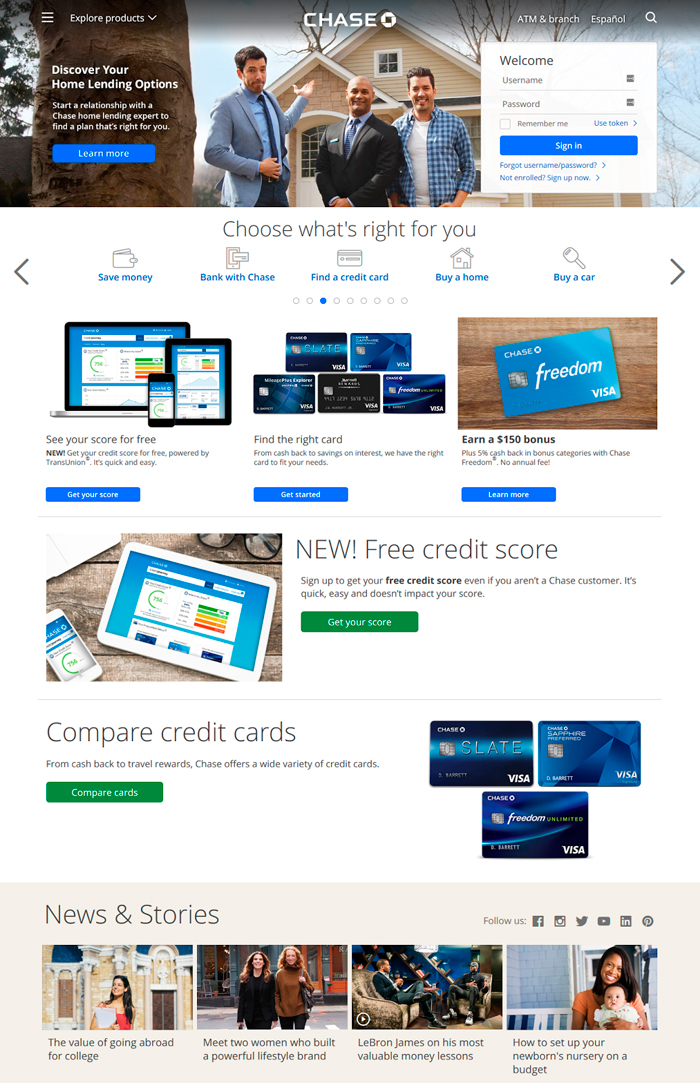
Image via Chase Bank
Following the aim of their brand story, care for their clients is evident on their Facebook page which consistently provides relevant information to their target audience:
It’s clear that Chase Bank has a defined story that is well executed throughout their brand strategy.
Here are five more fantastic examples of brand storytelling.
Related: What Brands Can Learn From Political Campaigns
5. Conduct Competitor Research
Your competitors serve as a meaningful resource to find out what’s working, what’s not, and may provide inspiration for doing things differently for your new brand strategy growth plan.
Let’s say you wanted to start a coffee shop. If you were smart, you’d do your competitor research first, perhaps first learning about the most popular coffee shop brand in the world: Starbucks. You’d recognize that with more than 18784 locations worldwide, they’ve grown substantially since 1971 when they opened their first store, and analyzing how they do things may help you with your strategizing.
In this video[10], a marketing analysis of the Starbucks brand is conducted by James Molnar, who discusses some of the things which are useful to know if you’re considering building or refreshing a consumer brand. The principles discussed are broadly applicable to many scenarios requiring competitor evaluation.
Some of the major benefits of competitor research for your brand strategy are as follows:
- An enhanced understanding of your target audience
- Evaluating what competitors are offering
- Keeping track of competitors’ price points and positioning
- Ways of finding new customers
It doesn’t need to be complex; there are many competitor research online tools to assist.
6. Prioritize Internal Branding
Research from Deloitte[11] has proven that “mission-driven”, employee centric, brand driven companies are more innovative, have lower staff turnover, and they tend to be first or second in their industry.
Related: CEO Brand Leadership: How Vision Drives Brand Growth
Internal branding means that the company has a brand strategy to attract and retain the “right fit” employee, in order to maximize return on investment. Hiring and keeping the right staff leads to a more productive workforce, competitive differentiation, innovation and decreased staff turnover. The right staff will show high commitment levels, deliver better quality work in less time, and become influential brand advocates online and offline.
Related: Brand Sponsorships, The Best Brand Ambassadors Are Already On Your Payroll
Think Google. Google attracts the very best people, because of their culture-by-design. If you’ve ever watched, “The Internship”, you’ll know what I mean.
Better than attempting to explain “Googliness” to you, watch this video[12] on the Google culture:
You don’t need to be a multi-billion dollar company to work on your own particular “Googliness”; but certainly start by creating an internal branding strategy. Then roll it out to your entire company, so that you can attract and retain the right people who will accomplish your business goals. You may find it helpful to use one of our bespoke brand building workshops to help you develop your strategy effectively. Feel free to drop us a line to [email protected] or ring us at +353 1 8322724 (GMT hours) if you’d like to know more. We’d be delighted to help.
Summary
Your brand strategy is the foundation to your business success. It goes hand-in-hand with, and informs your overall business strategy so give it the attention it deserves because you can’t fully achieve your growth plan without a strong brand strategy.
- Your Unique Value Proposition is what separates your business from the next. It’s what makes your brand stand out and differentiates you from your competition. Adding your UVP to the most visible part of all your key touch points, like your website, communicates the benefits of your business to your ideal visitors fast.
- A deep knowledge of your target audience should determine every brand strategy. No marketing strategy can succeed without it so map out your Purchaser Persona for each of your different customer types so you can build your brand to attract them and really meet their needs.
- Your brand story needs to be memorable, referable, worth talking about so don’t leave it to chance or worse still something mis-representative. Build your compelling brand story and make it central to everything you do so it’s used to grow your business and attract your ideal customers
- Assumptions are dangerous and competitor research is essential because it gives you a better understanding of your target audience, and is a powerful source of innovation. Consider a brand audit, it’s an essential brand management tool for every organisation, even with limited resources a lot can be uncovered which is invaluable and critical to your success.

Start auditing your brand here
- Strong employer branded companies do better than those who do not. That is you need to ensure your internal team are informed, regularly trained and indoctrinated into your brand philosophy. How you present your brand to your internal team, staff and stakeholders alike is just as important as how you present it to customers. In fact your team can’t sell or represent your brand successfully unless they are fully informed and aligned with the external market so your internal branding strategy needs to be planned and rolled out across your organization in order for your business to be successful.
Questions to consider…
- Does your company have a Unique Value Proposition?
- Does your brand message communicate within seconds, to your target audience, exactly how you solve their problems or have a solution which is a perfect fit for their needs?
- Have you mapped out all your Purchaser Personas?
- What message does your brand send out to prospects? Is it consistent across all touchpoints?
- Do you know your competitors and what they’re doing well or badly as the case may be? What can you do differently and a lot better?
- Are your employees highly engaged with your brand? How have you evaluated their level of engagement? When did you last get their feedback? Do you have an indiscriminate system, formally or informally, within your organisation that empowers your team to share their thoughts, feedback and suggestions?
[1] https://www.process.st/delivery-process/
[2] http://www.chubbiesshorts.com
[3] https://help-en-us.nike.com/app/answer/a_id/113
[4] http://www.coca-colacompany.com/stories/taste-the-feeling-launch
[5] http://panmore.com/walmart-vision-mission-statement-intensive-generic-strategies
[6] http://bombas.com
[7] http://puravidabracelets.com/
[8] https://www.shopify.com/enterprise/ecommerce-tools-of-a-multimillion-dollar-empire-pura-vida
[9] https://www.shopify.com/enterprise/ecommerce-tools-of-a-multimillion-dollar-empire-pura-vida
[10] https://www.youtube.com/watch?v=9HVMhm59Ibs
[11] https://dupress.deloitte.com/dup-us-en/deloitte-review/issue-16/employee-engagement-strategies.html
[12] https://www.youtube.com/watch?v=c1jlmdkApTQ

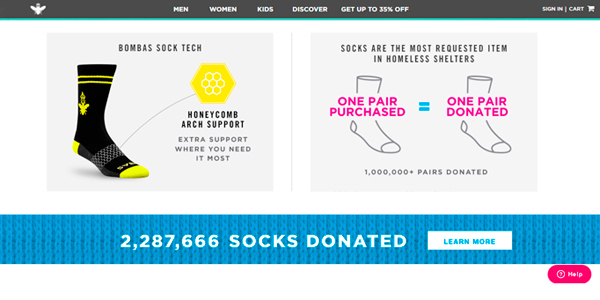
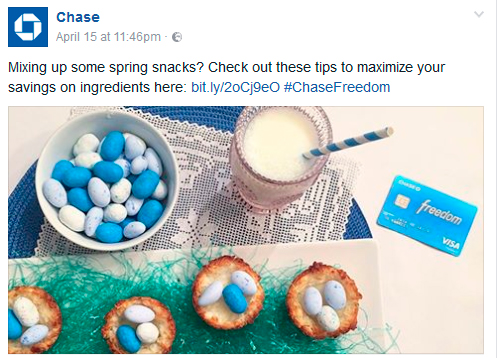



Your article is informative and presented very well.
Thank you Jakir,
Good to hear you got some value out of it, that makes all the hard work more worthwhile.
All the best
Lorraine
Thank you Jakir